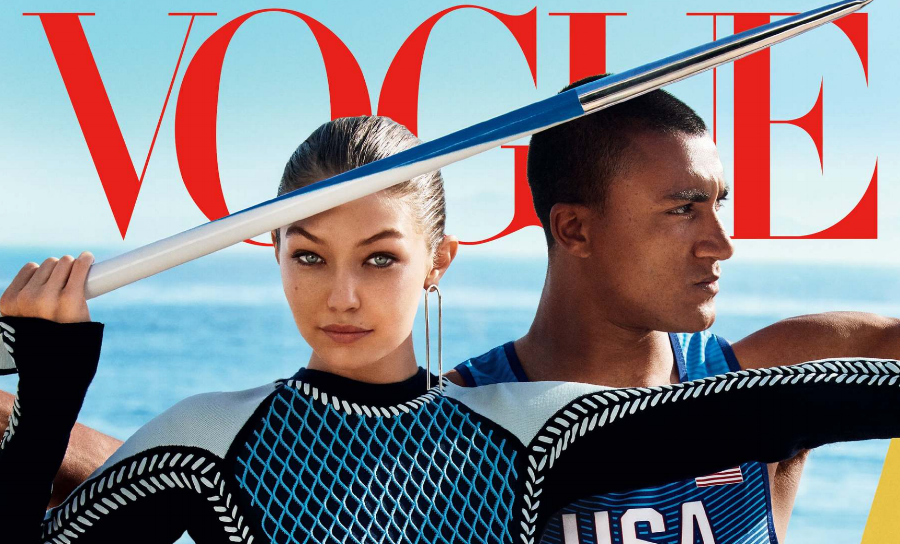
image: Vogue
Vogue – and magazine covers, in general – has evolved tremendously over the past several decades. Leading the charge: Anna Wintour, of course, who nabbed the title of editor-in-chief of America’s foremost fashion magazine in 1988. Wintour’s influence and talent needs little, if any, introduction or explanation. Her reach is extraordinary; her vision – which very clearly takes commercial demands seriously – is unequivocally her own.
When Vogue switched from covers starring supermodels to those with glamorous movie stars in a significant way (in the mid-1990s – with Geena Davis, Julia Roberts, Winona Ryder, Uma Thurman, Cameron Diaz, the Spice Girls, Sandra Bullock, Claire Danes, and Oprah, among others gracing the mag’s covers), Wintour solidified her status as a visionary leader. This was especially striking since the majority of magazines at the time put models – yes, plain old models – on their covers.
Yes, the change from 1988 to today has been marked and widespread.
Over the past several years in particular, American Vogue has led the way in catering primarily consumers’ overwhelming interest in celebrity and fame, accompanied, of course, by Oscar de la Renta and Proenza Schouler garments and accessories. The turning point for many was the April 2014 cover, which featured rapper Kanye West and reality star Kim Kardashian.
By way of its covers, features, and the initiatives it backs, the Vogue of today – and many other magazines, namely, American ones, that have followed suit – amounts to an interesting dichotomy.
On the positive side, Wintour remains a leader. She has partnered with the Council of Fashion Designers of America to foster more emerging design talent than ever before, and this is worthy of extremely high praise (even if not all of these designers turn out to be shining stars with viable businesses). She has also had a hand in helping to raise many, many millions of dollars for the Metropolitan Museum of Art’s Costume Institute.
Having said that, Vogue has come under fire for what at least some have voiced as taking part in a monthly – and with the rise of its website, daily, hourly – discrediting of itself and its position as America’s “fashion bible.” Such criticism has been tied to Vogue’s practice of covering each issue with the hottest actress of the moment or the most controversial pop star, or sticking a superficial article bearing content relating the a Kardashian, Jenner, or Hadid in between every post on its website.
Wintour, herself, has been very direct about why celebrities have replaced traditional models (as distinct from Instagram-famous models) on Vogue’s covers: It is just good business. In 2009, in addressing the magazine’s massive shift to actresses instead of models for its cover, she told the New York Times: “Until models become celebrities again in their own right, I can’t see them selling as well on magazine covers as actresses.”
She continued on to note, “For models to have the same social and commercial clout as Hollywood stars, they will have to want to live that sort of ‘fishbowl’ existence; they will have to be up for living a glamorous and public existence,” she says.
As for whether this strategic change in direction has actually helped the magazine sell more physical copies than it otherwise would have if models were on the covers, is unclear. It has certainly helped drive a ton of traffic to Vogue’s website, though, and in 2017, that is really the only thing that matters.







